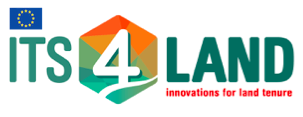Who are we?
The assembled consortium is multi-sectoral, multinational, and multidisciplinary – as is necessarily required by the work programme and overarching aim of this project – that being to reinforce strategic collaboration between the EU and East Africa through the delivery of market oriented suite of land tenure recording tools. The partners deliver expertise at both ends of the value chain: R&D and scaling activities are covered. They are compatible in terms of working approach, expertise, and focus. Consortium members have variously worked collaboratively previously: this expedites the consortium building activities in terms cultural understandings, work procedures, and regulatory requirements.
UT leads and brings decades of experience in land tenure recording, and geospatial technology development and diffusion, specifically for developing contexts. It provides an ideal hub for linking EU technology expertise with local East African land tenure recording knowhow. It also brings the required technological expertise with respect to UAV application and automatic feature extraction – both essential for the second specific objective (design) of its4land.
WWU brings more technological inspiration and innovation, also essential for the second specific objective (design), with regards to smart sketchmap design and application: it is unparalleled in the EU regarding this emerging geospatial approach.
KUL complements the technological expertise of UT and KUL by introducing essential expertise on large-scale multi-stakeholder analysis, governance model design, and capacity development. This knowledge is essential for both specific objective 1 (contextualization – needs assessment) and 3 (transformation via governance and capacity development) of the overarching project. KUL and UT have previously successfully collaborated through KUL’s Spatialist program.
HL brings decades of private sector expertise in both the EU and East African context, and in the ICT domain specifically: this knowledge and perspective is absolutely essential for three phases of the value-chain innovation process covered by the project – in particular the third specific objective (i. e. business model development) – and those that lie beyond the scope of the project.
ESRI provides an input linkage to the EU and East African private sector community. ESRI is based in Rwanda, but, is acts as a subsidiary of ESRI Germany. It provides unparalleled knowledge for establishing sustainable private sector business activities across East Africa, particularly Rwanda, whilst also understanding the institutional and regulatory requirements when dealing with EU project work. Having completed large-scale innovation projects in Rwanda, it brings further expertise with regards to conversion of R&D into scalable and implementable ICT solutions (i.e. all project specific objectives).
East African expertize in the land tenure recording and technology application is provided by INES, BDU, and TUK: each is a leader in its respective country with regards to land tenure recording research and training. All have previously worked with UT on other successful projects. Alumni from UT are also stationed at INES and BDU: work approaches are understood and compatible. Consequently, each provides access to a dense network of government, NGO, and private sector actors – this mitigates the need to complicate and extend the consortium beyond 8 members (deemed suitable for the work programme). Already networked via EALAN, these three consortium members also provide linkages to the East African region more generally. All three have worked previously with UT, and BDU has previously worked with HL on Ethiopian specific projects. These consortium members are essential for completion of the first, second, and third specific objectives.

Recent Comments